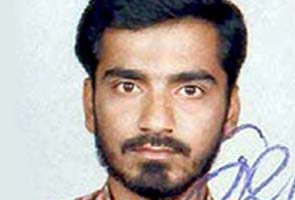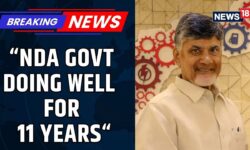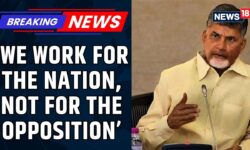Abu Hamza’s journey to the 26/11 control room

New Delhi:NDTV: As Mumbai gasped for breath, its landmarks on fire, its people taken hostage, a chilling command was issued over the phone to the pair of terrorists who had taken over Nariman House, the Jewish centre at Colaba.
“Tell them….this is just the trailer…the film has yet to begin.”
That voice came from across the border, in Pakistan. But Indian intelligence officers felt it belonged to an Indian. The same voice used Hindi words, rather than Urdu, as it told the terrorists executing 26/11 what to do next.
 Samples of the voice would play a key role in identifying Abu Hamza, real name Syed Zaibuddin Ansari, as the man India was searching for. It was another terrorist, caught in 2010 for the attack on the German Bakery in Pune, that helped connect the dots. He said Ansari was originally from Maharashtra and had, after his role as a handler during 26/11, played a part in the bomb that exploded at the bakery, leaving 17 dead. (26/11 was originally planned for 2006: Abu Hamza)
Samples of the voice would play a key role in identifying Abu Hamza, real name Syed Zaibuddin Ansari, as the man India was searching for. It was another terrorist, caught in 2010 for the attack on the German Bakery in Pune, that helped connect the dots. He said Ansari was originally from Maharashtra and had, after his role as a handler during 26/11, played a part in the bomb that exploded at the bakery, leaving 17 dead. (26/11 was originally planned for 2006: Abu Hamza)
That helped officers from different intelligence agencies trace Zabiuddin Ansari to the place that grew up in – Beed in Maharashtra, an area subjected repeatedly to communal violence.
The man, who would later take Abu Hamza as one his ten aliases, studied here at the Indian Technical Institute. He worked for a while as an insurance agent. Then the communal riots in neighbouring Gujarat in 2002 turned him into a jihadi.
He was recruited by the terror group Students Islamic Movement of India or SIMI. A few years later, he was in Poonch in Jammu and Kashmir when he entered the ranks of the Lashkar-e-Taiba (LeT). Hamza has told the police that he was reporting to two men called Yakub and Muzameel, and doesn’t know much about LeT chief Hafiz Sayeed. In fact, he claims that he has seen Sayeed only during a few sermons.
In 2003, he jumped bail after he was arrested in Beed and charged with attempt to murder of a woman.
In 2006, when a stack of AK47s and a vast quantity of RDX were found in Aurangabad, he was among those who the police tried to track. But he managed to escape to Bangladesh without any papers, and from there, travelled to Pakistan.
On 26/11, Abu Hamza was in the control room in Karachi. But he says he was removed after the first day and asked to “take rest” by Zaki-ur Rehman Lakvi, the Lashkar leader, who India believes was the mastermind behind the Mumbai attacks.
After Ajmal Kasab was arrested during 26/11- the lone terrorist in the Mumbai attacks to be caught alive – the handlers who had worked on the attack were asked to leave Pakistan. Hamza moved first to Muzafarabad in Pakistan Occupied Kashmir , and then to Saudi Arabia with a Pakistani passport under the name Rasit Ali. His mission there was to identify funds and recruits for the Lashkar.
He however was arrested in connection with a forgery case a month after got there. He was deported after India used DNA samples from his family members and voice samples to establish that he was an Indian and was essential to India’s investigation. (How India tracked Abu Hamza)
In his conversations during 26/11, this excerpt suggests what may have driven his conversion to a life of terror and murder:
Hukumat peeth thap thapathi hai aur prashasan sar par tole marta hai. Iski taza misaal Sachar committee ke saath hai. Hukumat koi aur ailan karti hai aur prashaasan uska amal Muslim yuvakon ko giraftar karke deta hai. Unka future barbaad karti hai. (The Government is patting its back … while the authorities will beat you. The Sachhar Committee report is a fresh example. The Government will announce something, while authorities will follow by arresting Muslim youths and spoils their future)





